Review: Kate Mulvany's New Adaptation of MARY STUART Returns Feminine Power To Scotland and England's Famous Queens
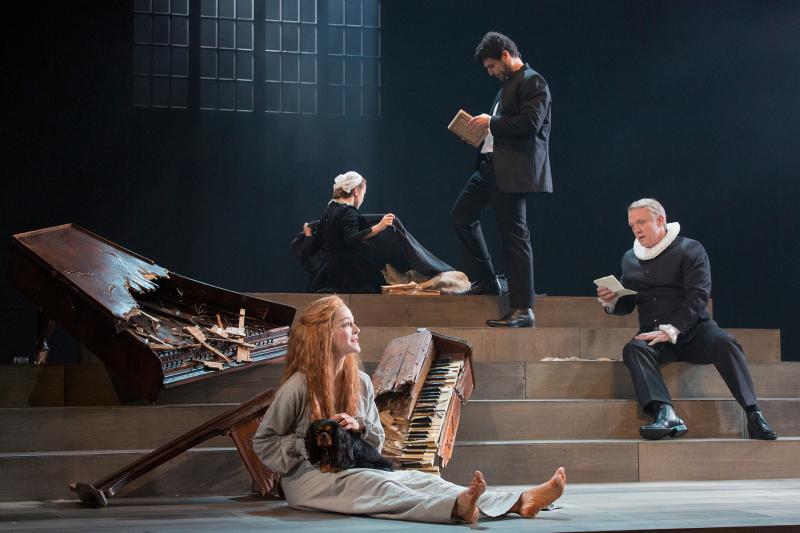
Saturday 9th February 2019, 7:30pm, Rosyln Packer Theatre
Acclaimed Australian playwright Kate Mulvany delivers another triumph with her latest adaptation, this time of Friedrich Schiller's MARY STUART, presenting the famous Queens from a long overdue perspective which ensures the women regain their rightful place at the center of their story. With Lee Lewis careful direction this new work from Sydney Theatre Company is both humorous and human in its exploration of the women who had no peers of their equal but each other.

Whilst many would be familiar with the struggle for power between the English Queen Elizabeth and Mary Stuart, Queen of Scotland, Kate Mulvany seeks to consider their relationship from a different perspective that contemplates that both were powerful leaders, not as susceptible to the male machinations that earlier male writers would have audiences believe. Mulvany draws on extensive research of the cousin's (Mary's paternal grandmother was Henry VIII, Elizabeth's father's Sister) correspondence to put their own words into the mouths of incredible actresses Caroline Brazier and Helen Thomson who present Mary and Elizabeth respectively. This verbatim text, elements of Schiller's work and Mulvany's original imaginings of what the women might have said leads to some brilliantly funny, heartfelt and immensely clever conversations which Lewis has thankfully opted to have presented in naturalistic voice easier on the Australian ear than old world English often favored with historical stories. Whilst the Queens never met in real life, Mulvany's expression of their connection through letters where they had a meeting of minds is inspired and helps break down the barriers between the two so that the audience can witness their humanity.
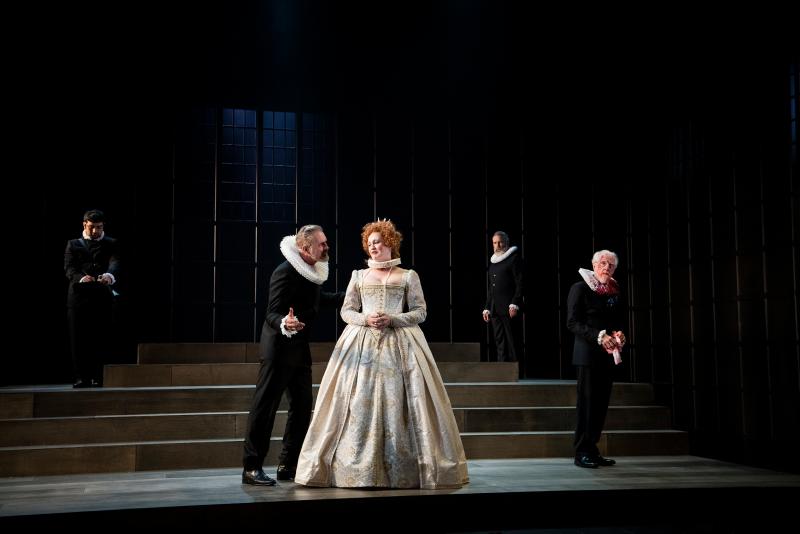
With the work set within the confines of Fotheringhay Castle, where Mary Stuart spent the last of her 19 years in prison, and most likely Richmond Palace, Queen Elizabeth I's favored residence, Set Designer Elizabeth Gadsby has created a vast grey box space that serves both settings. The walls, whilst of a single tone, bear the texture of the wood paneled walls that insulated the stone walls of the estates of the era and bars guard the high windows. A large stepped stone plinth with multiple levels echoes both the stone of Mary's prison cell and the stairs and levels of grand estates like Richmond Palace. Paul Jackson's lighting design helps shift the scenes from the gloomy cell to the brighter royal chambers with additional 'sunlight' streaming in through the bars. He helps draw focus whilst the rest of the space disappears into darkness and adds a sinister tone to Queen Elizabeth's nightmare. Max Lyandvert's composition and sound design is for the most part subtle, allowing for greater impact of distant military drums, echoing voices and things that go crash and bang in the darkness, sometimes in stomach churning detail.
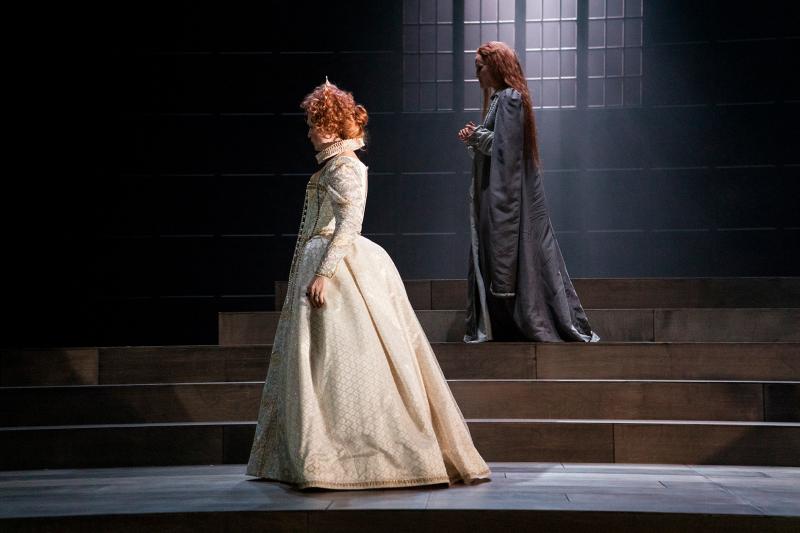
Mel Page's costuming draws on the extravagance of the famously vain Queen Elizabeth's well-known attire of opulent brocades, dripping with pearls, topped off with perfect curls, heaving bust and whitened face which was reportedly originally made up of white lead and vinegar. Mary is conversely attired in little more than a cotton nightdress as she remains caged in her cell, only having the opportunity to present herself closer to her former glory when waiting for the executioner's block where she discards velvet robes for the red dress a martyr. Page ensures the focus remains on the women of the story as she puts the men of the piece in contemporary black suits with the fashionable white-collar ruff and lace cuffs as the only concession to the period of the piece.
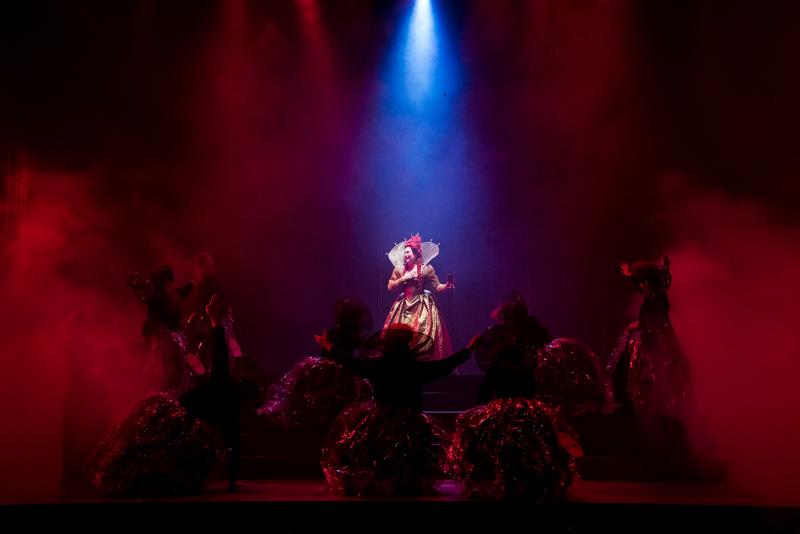
The performances are universally fabulous. Brazier garners sympathy for her Mary with a gentle expression of a woman just seemingly wanting to return to her home with no designs on her cousin's crown. She infuses a flirtatious playfulness to Mary's interactions with her jailer Paulet, (Simon Burke) inkeeping with the research that found she was more sexual being than other interpretations probably gave of her. There is also a bold defiant will that still simmers in face of what may be considered the inevitable as she challenges the immovable Burleigh who she distrusts greatly given the propensity for the government to keep making up laws to suit themselves, laws that he intends to apply in retrospect. Whilst Mary generally choses the gentle approach to get what she wants, knowing she has little influence but to try to convince everyone she is not a threat to the Queen of England, Brazier presents Mary's final confession with chilling sinister undertones as she reveals her true feelings.
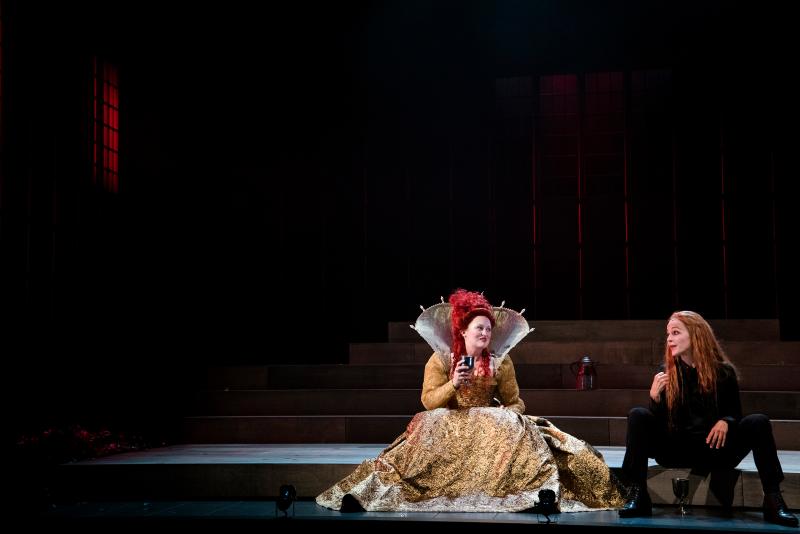
In contrast to Mary, Helen Thomson ensures that Elizabeth is seen as willing and able to brandish her power and sure of her status from the start as she storms the stage impervious to the old man drenched in blood behind her (Shrewsbury- Peter Carroll). The same gutsy presentation that was last seen as HARP IN THE SOUTH's resident Madam shines through with a brilliant expression of Gloriana (another of Queen Elizabeth's monikers along with The Virgin Queen) as self-absorbed woman used to getting her way but still insecure in her own power and position. Her concern over her new secretary Davidson's honest response to her questions of her cousin's appearance show in her facial expressions as cracks in Elizabeth's fortitude whilst also being a quiet commentary of the continual comparison of women that probably wouldn't have been considered if the story were of kings. Thomson gives a bold brash Queen Elizabeth that can drop insults with perfect comic timing and then shift to a creature of pity as the audience realizes the challenges that she faces. Her monologue as she strips away Elizabeth's façade of wig and makeup is powerful as she breaks the fourth wall to talk direct, across the centuries, to the modern generation that still has women as being as slave to society that sets constraints on them because of their gender in a male centric world. Her expression of the Virgin Queen's inner conflict at being asked to sign her cousin's, another Queen, death warrant captures her realization that she does not want blood on her conscience and the realization that it isnt right for a monarch to order the death of another monarch.

Of the men that surround the Queens, Simon Burke delivers a delightfully camp Paulet as a sympathetic jailer, reflective of the 19 years he has guarded over her. Peter Carroll exudes a world weary Shrewsbury, unfazed by the blood hurled at him but ready to walk away from the court unsatisfied with his concerns going unheeded by his Queen. Tony Cogin captures Burleigh's is obnoxious masculinity of a man who is used to getting his own way, and if not rewriting the rule books and manipulating his way around Queen Elizabeth. Fayssal Bazzi presents Mortimer, the character Schiller invented for the story, as a representation of the blind devotion that people showed to the imprisoned Mary. Matthew Whittet is amusingly simpering as the French Ambassador Aubespine seeking to secure the Virgin Queen's hand for the Duke of Anjou. Rahel Romahn presents Elizabeth's new secretary as a delightfully nervous young man who has found himself way out of his depth in the royal court and just hoping to not get into trouble. His role in the delivery of the fateful document is hilarious.
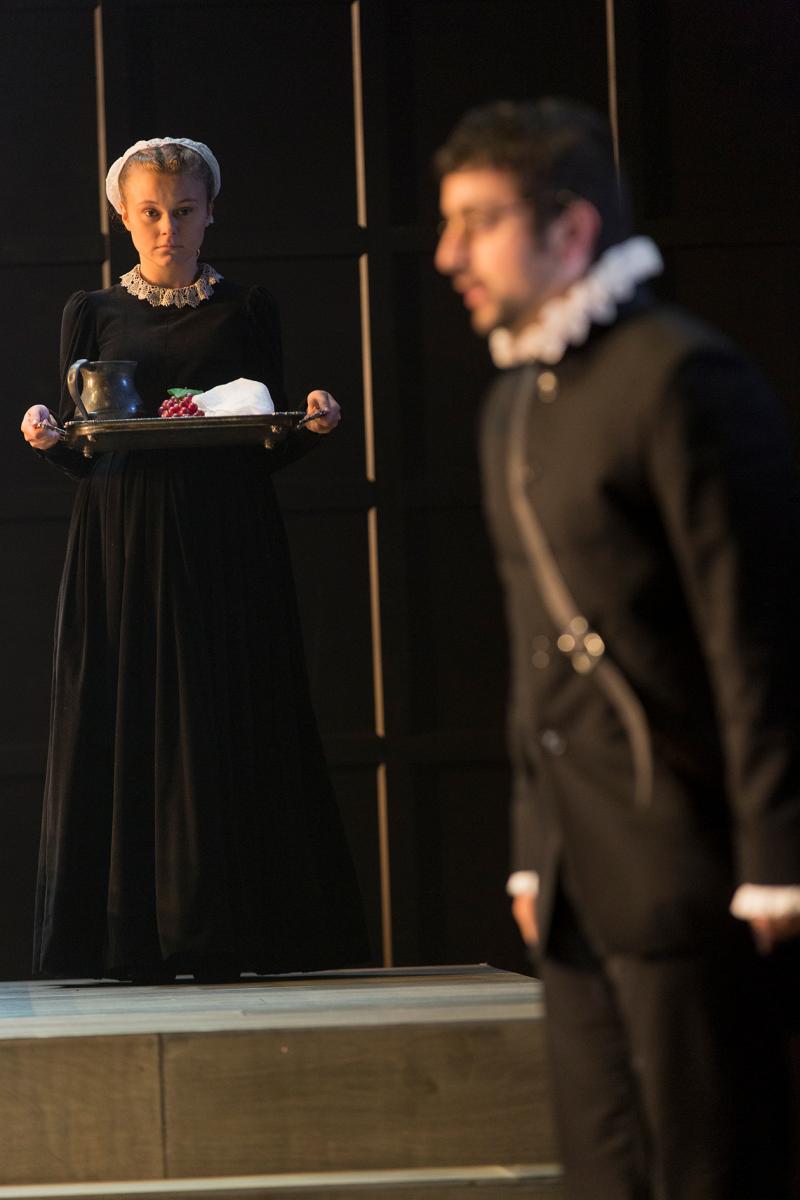
The final character in the work is the lady's maid, the young girl presented by Darcey Wilson who is conspicuous in her silence and her invisibility to the rest of the characters. She is used to highlight the different levels of women in the society of the age as well serving to deliver various items to the two Queens.
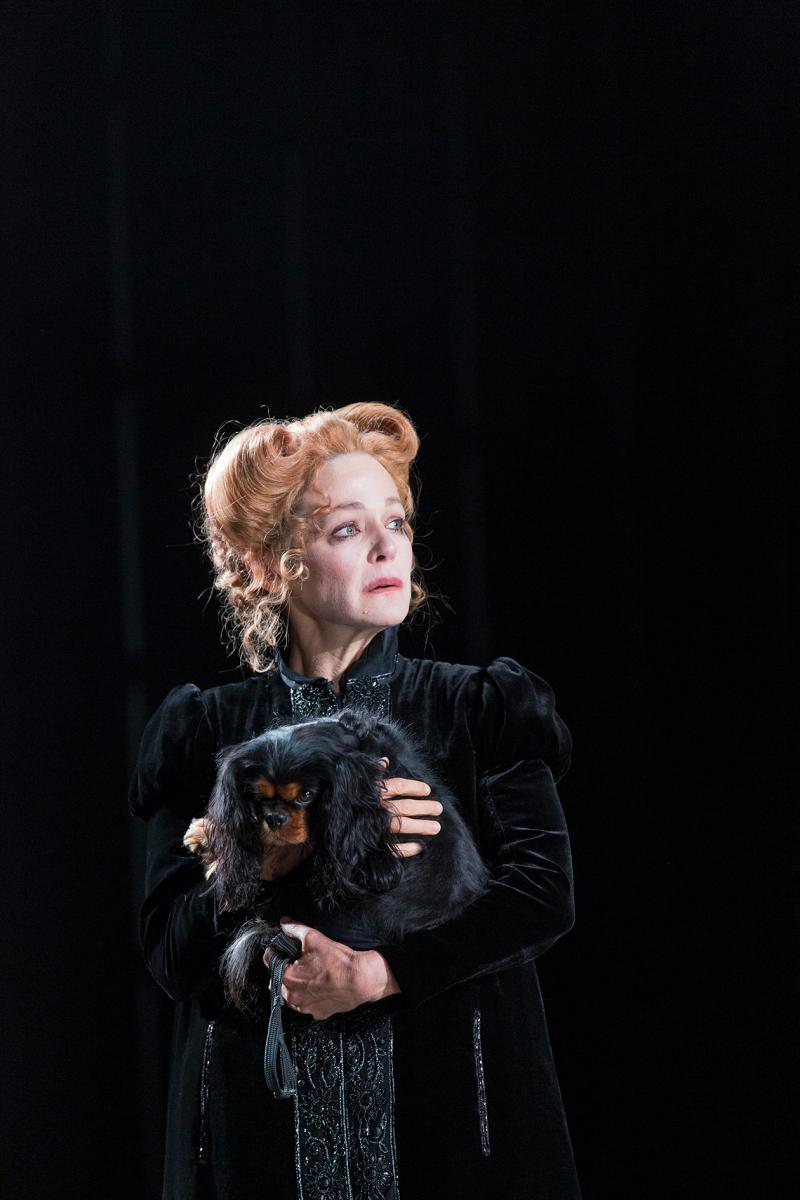
The new adaptation of MARY STUART is captivating and enlightening. Written and directed by strong females, the Queens have been given back their voice, their power, and their humanity and speak to the modern generation with heart and humor. This brilliant work is a definite must see this summer.

MARY STUART
https://www.sydneytheatre.com.au/whats-on/productions/2019/mary-stuart
Photos: Brett Boardman
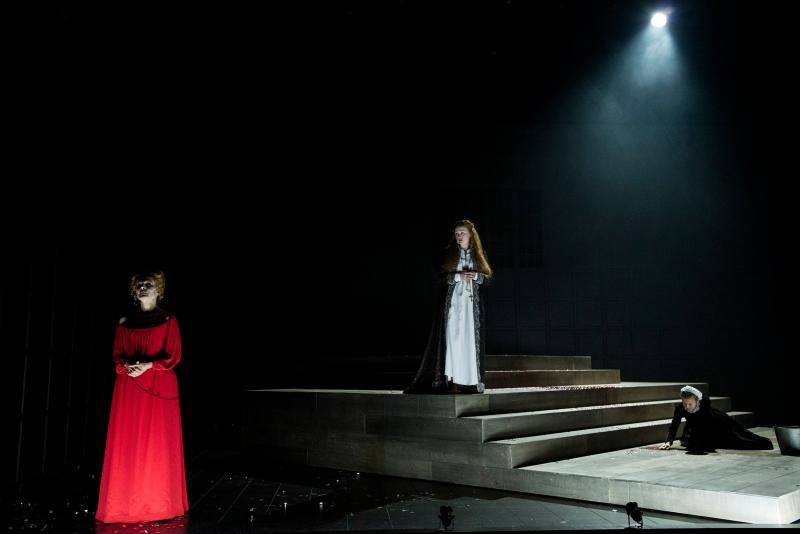
Comments
Videos

